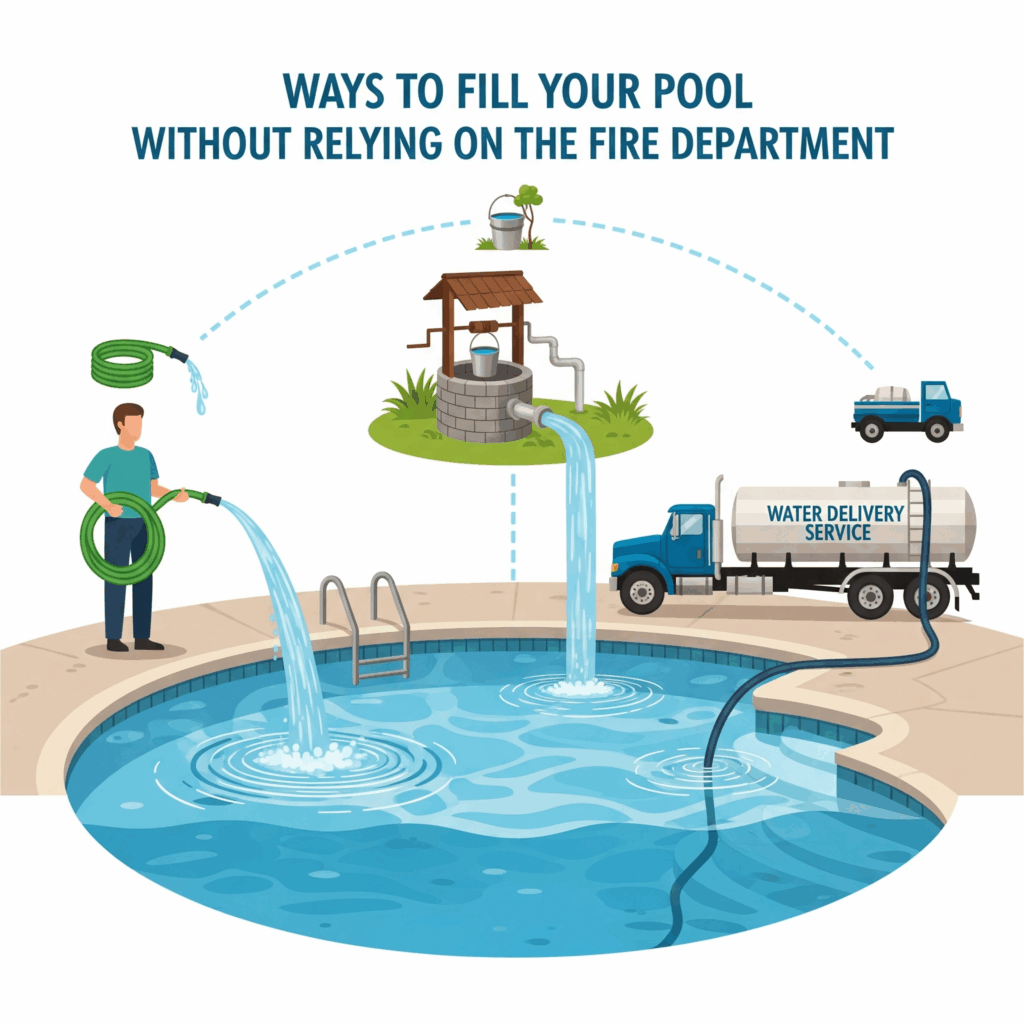
Wondering if the fire department will fill your pool? Let’s dive into the reality of this common misconception. As a seasoned expert in emergency services, I’ll shed light on why this idea might not hold water.
While it’s tempting to think of the fire department as pool-filling superheroes, the truth is a bit more nuanced. In this article, I’ll explain why relying on the fire department for pool maintenance might not be the best approach. Let’s extinguish the myth and explore the facts together.
The Fire Department’s Primary Responsibilities
When it comes to emergency services, it’s crucial to understand the fire department’s primary responsibilities. Here are some key points to keep in mind:
- Fire Suppression: One of the main tasks of the fire department is to respond to fires and extinguish them to prevent loss of life and property damage.
- Emergency Medical Services: Many fire departments also provide emergency medical services, responding to medical emergencies and providing critical care.
- Rescue Operations: From vehicle accidents to water rescues, the fire department plays a vital role in search and rescue operations.
- Hazardous Materials Response: Dealing with hazardous materials incidents is another critical responsibility of the fire department to protect public safety.
- Fire Prevention Education: Educating the community on fire safety practices and prevention measures is a key aspect of the fire department’s role.
- Community Outreach: Engaging with the community through events, programs, and initiatives to promote safety and preparedness is an essential part of their duties.
- Training and Preparedness: Firefighters undergo rigorous training to stay prepared for various emergencies and constantly hone their skills.
Remember, while the fire department is there to protect and serve the community, pool filling is not typically within their scope of services.

Water Usage Concerns
Water usage is a critical consideration when it comes to pool filling requests. As a responsible citizen, it’s important to be mindful of the amount of water needed to fill a pool. A typical residential pool can require thousands of gallons of water, which can put a strain on local water resources, especially during drought conditions.
Conserving water is crucial for sustainability. The fire department’s primary focus is on emergency response and public safety. Using significant amounts of water for non-essential purposes like pool filling can divert resources away from critical needs, potentially impacting emergency response times in the community.
It’s essential to explore alternative solutions for filling your pool that are environmentally friendly and resource-conscious. Consider options such as rainwater harvesting, pool covers to reduce evaporation, or water recycling systems to minimize water waste.
Being mindful of water conservation not only benefits the community and the environment but also ensures that essential fire department resources are available when they are truly needed.
Legal and Safety Limitations
When it comes to pool filling requests, it’s essential to consider the legal and safety limitations that impact fire departments’ ability to assist. As much as we’d like to fulfill all requests, there are several reasons why it might not be feasible:
- Water Usage Regulations: Many areas have strict regulations on how water can be used. Fire departments have limits on non-emergency water usage to ensure resources are available for critical needs.
- Liability Concerns: Filling pools involves risks. Fire departments must prioritize emergencies to avoid potential liabilities and ensure public safety.
- Operational Constraints: Firefighters’ primary focus is responding to emergencies quickly and efficiently. Pool filling requests may divert valuable time and resources from these vital tasks.
- Resource Availability: Fire departments have limited water supply for non-emergency tasks. Ensuring an adequate water reserve for firefighting is crucial.
- Community Needs: Prioritizing pool filling requests over pressing community needs can have serious consequences. Fire departments must allocate resources wisely to serve the public effectively.
By understanding these legal and safety limitations, we can appreciate the challenges fire departments face when handling pool filling requests. It’s crucial to respect these boundaries and explore alternative methods to fill your pool responsibly.
Alternative Solutions for Pool Filling
Filling your pool responsibly ensures compliance with local regulations while conserving resources. Here are several effective methods to fill your pool without relying on the fire department:
1. Municipal Water Supply
- How to Use: Connect a standard garden hose to an outdoor spigot.
- Pros:
- Legal and straightforward.
- Water is treated and safe for use.
- Cons:
- Can take up to 24-48 hours depending on pool size.
- May increase your water bill.
2. Water Delivery Services
- How to Use: Hire a professional service that specializes in bulk water delivery.
- Pros:
- Quick filling; usually can fill a standard pool within hours.
- Convenient for large pools.
- Cons:
- More expensive than using municipal water.
3. Rainwater Harvesting
- How to Use: If local regulations allow, set up a rainwater collection system to gather water in barrels or tanks.
- Pros:
- Eco-friendly and reduces water costs.
- Sustainable use of natural resources.
- Cons:
- Requires a significant upfront investment.
- Dependent on local rainfall patterns.
4. Well Water (if available)
- How to Use: If you have access to a well, you can use a pump to fill your pool.
- Pros:
- Often free of charge after the initial drilling cost.
- Cons:
- Ensure your well is tested for contaminants.
- Be mindful of local regulations regarding water usage.
5. Local Swimming Pools or Community Centers
- How to Use: Some local facilities might allow water access for a fee.
- Pros:
- Support local businesses or community services.
- Cons:
- Limited availability and may require planning ahead.
6. Neighborhood Pool Parties
- How to Use: Coordinate with neighbors to fill your pool during community events (especially in summer).
- Pros:
- Fun way to socialize and save costs.
- Cons:
- Interaction and cooperation needed from multiple parties.
7. Irrigation Systems
- How to Use: If permitted, redirect existing irrigation systems to fill your pool.
- Pros:
- Utilizes water that would otherwise be wasted.
- Cons:
- Must ensure compliance with local laws.
8. Garden Hose (from Your House)
- How: Connect a standard garden hose to your home’s outdoor spigot.
- Pros: Safe, legal, and simple; water is metered and billed through your account.
- Cons: Slow process—it may take 24–48 hours to fill a large pool.
Considerations for Pool Filling
- Check Local Regulations: Always verify with your local water authority to understand restrictions, permits, and fees.
- Monitor Water Use: Track how much water is used, especially if filling from a municipal supply, to avoid unexpected costs.
- Conserve Water: Before filling, consider covering the pool when not in use to reduce evaporation, and ensure proper maintenance to prevent leaks.
Exploring these alternative solutions not only alleviates pressure on fire departments but also promotes responsible water usage practices within our communities. By being proactive and considering these alternatives, we can ensure that our pool filling needs are met without compromising emergency services’ capabilities.
Conclusion
Exploring alternative methods for filling pools can help individuals meet their needs without burdening fire departments. Options like water delivery services, professional pool filling companies, rainwater harvesting systems, and well water offer sustainable solutions. By choosing responsible pool filling practices, we can ensure emergency services remain available when needed. Making informed decisions about pool filling not only benefits us but also supports water conservation efforts.
